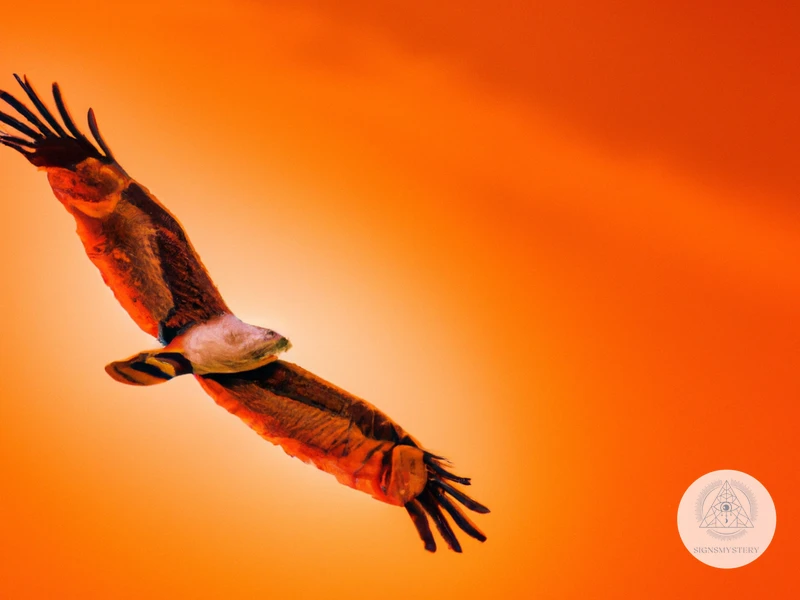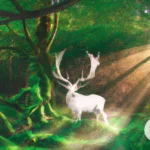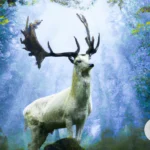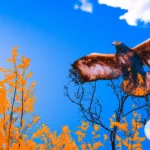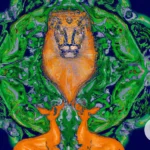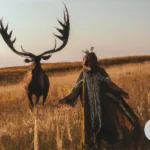The world is filled with a fascinating array of animals, each with its own unique characteristics and symbolism. Throughout history, animals have held significant cultural symbolism in various traditions across the globe. From ancient civilizations like Egypt and China to indigenous Native American and Celtic tribes, these animals have served as powerful symbols, conveying deep meanings and carrying rich cultural significance. In this article, we will delve into the world of animal symbolism, exploring its importance in different cultures and examining the specific symbolism associated with some of the most revered creatures. We will also take a look at how animal symbolism continues to have an impact on modern culture, from tattoos to fashion and jewelry. So join us on this journey, as we unravel the intricate and captivating world of animal symbolism.
The Importance of Animal Symbolism
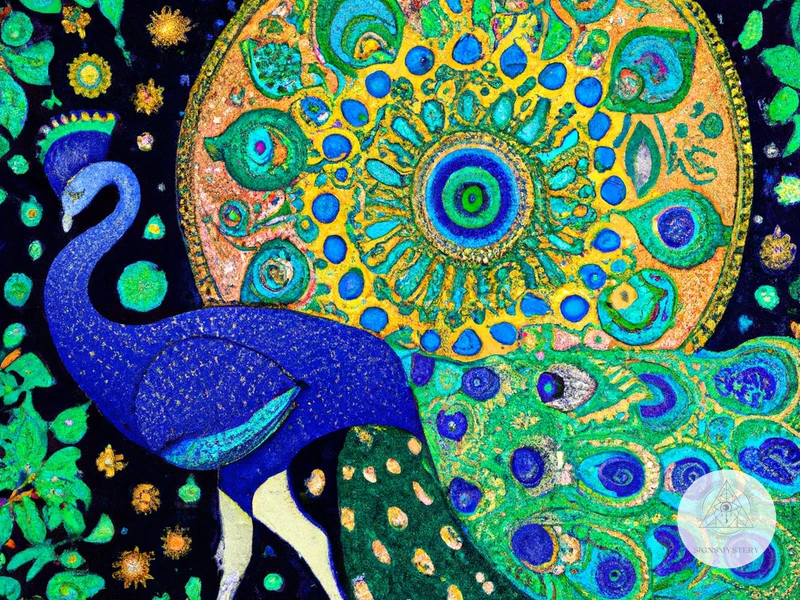
Animal symbolism has played a crucial role in the cultural and spiritual traditions of different societies throughout history. It has been used as a means of communication, representation, and connection with the natural world. By incorporating specific animals into their mythology, rituals, and artwork, ancient civilizations sought to convey profound concepts, reflect their beliefs, and establish a connection between the human and animal realms. Animal symbolism provided a way for individuals to understand and interpret the world around them, fostering a sense of identity, spirituality, and harmony with nature.
In many cultures, animals are considered sacred and are believed to possess distinctive qualities and powers. For example, the lion symbolizes strength, courage, and leadership in various ancient cultures. Lions were revered in Ancient Egypt for their association with the gods and their role as protectors of pharaohs. Understanding lion spirit animal symbolism can provide insights into the beliefs and values of these ancient cultures. Similarly, Native American traditions attributed different animal spirits to individuals based on their characteristics and traits, creating a deeper connection between humans and the animal kingdom.
Animal symbolism also serves as a source of inspiration and guidance in modern culture. Many individuals find personal meaning in identifying with a particular spirit animal, which acts as a guiding force in their lives. Psychologists have explored the modern interpretation of spirit animals and the role they play in enhancing connection and self-discovery. The concept of spirit animals continues to be a popular topic, with people seeking to understand the significance and symbolism of different animals in their lives.
By exploring the importance of animal symbolism, we gain a better understanding of the cultural and spiritual significance it holds in various traditions. It allows us to appreciate the deep connection between humans and animals and the role these symbols continue to play in shaping our understanding of the world. Whether it be in ancient mythology or in modern interpretations, animal symbolism remains a powerful tool for self-reflection, connection, and personal growth.
Enhancing Connection with Your Spirit Animal in Sacred Space
1. Animal Symbolism in Ancient Egypt
Animal symbolism held tremendous significance in the ancient Egyptian culture, with various animals representing specific qualities and embodying divine attributes. The Egyptians saw animals as manifestations of gods and goddesses, and their symbolism played a significant role in religious rituals, art, and mythology. Some of the most prominent examples of animal symbolism in ancient Egypt include:
1. The Lion: The lion was considered a symbol of power, royalty, and protection. It was associated with the goddess Sekhmet, who was often depicted with the head of a lioness. Understanding the lion spirit animal symbolism can provide insights into the ancient Egyptian belief system and their reverence for these majestic creatures. The lion was believed to embody the fierce protective nature of the gods and was often associated with pharaohs, who were seen as divine rulers.
2. The Scarab Beetle: The scarab beetle held immense symbolism in ancient Egypt, representing rebirth, transformation, and the cycle of life. It was associated with the god Khepri, who symbolized the rising sun and was believed to roll the sun across the sky, much like the scarab beetle rolling a ball of dung. The scarab amulets were popular symbols of protection and good luck and were often used in funerary rituals to guide the deceased to the afterlife.
3. The Cat: Cats were highly revered in ancient Egypt and were associated with the goddess Bastet, who represented protection, fertility, and motherhood. Cats were believed to possess magical powers and were kept as domestic companions. The killing of a cat, even accidentally, was considered a grave offense and could result in severe punishments.
4. The Falcon: The falcon, particularly the Peregrine falcon, symbolized the god Horus, who was worshipped as the god of the sky, kingship, and divine protection. The falcon was seen as a symbol of power, keen vision, and swiftness. Horus was often depicted with the head of a falcon and was considered the protector of the pharaohs.
5. The Ibis: The ibis bird played a significant role in ancient Egyptian mythology and symbolized wisdom and knowledge. The god Thoth, who was associated with writing, magic, and the moon, was often depicted with the head of an ibis. The ibis bird was believed to have the power to ward off evil and was closely associated with scribes and scholars.
These are just a few examples of the rich animal symbolism in ancient Egypt. By understanding the significance of these symbols, we gain insight into the religious beliefs, mythology, and cultural values of this ancient civilization.
Understanding the Lion as a Spirit Animal in Ancient Cultures
2. Animal Symbolism in Native American Traditions
Native American traditions are deeply rooted in a profound connection with nature and the animal kingdom. Animals play a central role in Native American symbolism, serving as guides, protectors, and sources of wisdom. Each animal is associated with specific traits and characteristics that hold spiritual and cultural significance. Understanding the animal symbolism in Native American traditions provides us with insights into their beliefs, values, and way of life.
1. The Bear: The bear holds great importance in Native American cultures, symbolizing strength, courage, and healing. It is often associated with the power of introspection and hibernation. In many Native American tribes, the bear is considered the protector of the forest and is revered for its ability to provide nourishment and sustenance.
2. The Eagle: The eagle is a powerful symbol of spirituality and connection to the divine. It represents vision, wisdom, and freedom. In Native American traditions, the eagle is believed to carry prayers to the Creator and is seen as a messenger between the physical and spiritual worlds.
3. The Wolf: Wolves hold significant symbolism in Native American cultures, representing loyalty, teamwork, and instincts. They are considered guardians and guides, embodying the importance of community and the strength of the pack. The wolf is seen as a teacher, imparting lessons about the balance of nature and the importance of harmony.
4. The Buffalo: The buffalo, or bison, is a symbol of abundance, gratitude, and harmony. Native Americans view the buffalo as a provider, representing the sustenance and resources necessary for survival. The buffalo also symbolizes spiritual strength and the interconnectedness of all living beings.
5. The Snake: The snake is a symbol of transformation and regeneration in Native American traditions. It represents healing, wisdom, and rebirth. The shedding of its skin is seen as a metaphor for personal growth and the ability to shed old habits and belief systems.
The animal symbolism in Native American traditions reflects the deep respect and reverence for nature and its inhabitants. These symbols serve as reminders of the interconnectivity between humans, animals, and the natural world. By understanding and appreciating Native American animal symbolism, we gain a greater appreciation for the wisdom and teachings embedded in their cultural heritage.
The Psychological Aspects of Modern Spirit Animal Symbolism
3. Animal Symbolism in Chinese Culture
In Chinese culture, animals play a significant role in symbolism, representing a wide range of virtues, qualities, and beliefs. The Chinese zodiac is perhaps the most well-known example of animal symbolism in Chinese culture. This zodiac system is based on a 12-year cycle, with each year associated with a specific animal sign. These animals include the Rat, Ox, Tiger, Rabbit, Dragon, Snake, Horse, Sheep, Monkey, Rooster, Dog, and Pig. Each animal symbolizes certain traits and characteristics that are believed to influence the personalities and fortunes of individuals born in that particular year. This system is highly regarded in China and is widely used to determine compatibility in relationships, predict fortunes, and guide important life decisions.
Aside from the zodiac, certain animals hold special cultural symbolism in Chinese traditions. The Dragon, for instance, is considered a powerful and auspicious symbol associated with imperial power, strength, and good fortune. It is believed to bring blessings and is often depicted in various artworks, festivals, and ceremonies. The Dragon Dance and Dragon Boat Festival are examples of how this mythical creature is celebrated and honored in Chinese culture.
Another significant animal in Chinese symbolism is the Phoenix. Seen as a symbol of grace, beauty, and rebirth, the Phoenix holds a revered status as the “King of Birds” in Chinese mythology. It is often depicted alongside dragons and is associated with feminine energy, harmony, and good luck. The Phoenix is also commonly associated with the idea of immortality and is believed to bring prosperity and blessings.
Additionally, the Tiger holds great symbolism in Chinese culture, representing power, bravery, and protection. The Tiger is seen as a guardian against evil spirits and is often associated with military leadership and courage. It is also considered a symbol of luck and is believed to bring wealth and prosperity to those who display its image.
Animal symbolism plays a crucial role in Chinese culture, both in the zodiac system and in various mythological and cultural contexts. These symbols are deeply ingrained in Chinese traditions and continue to be celebrated and revered in festivals, rituals, and everyday life. They reflect the values, beliefs, and aspirations of the Chinese people, serving as a reminder of their rich cultural heritage and offering guidance and inspiration for the present and future.
The Psychological Significance of Modern Spirit Animal Symbolism
4. Animal Symbolism in Hinduism
Animal symbolism holds a significant place in Hinduism, one of the world’s oldest religions. Animals are deeply integrated into Hindu mythology and play various roles in religious rituals, folklore, and philosophical concepts. In Hinduism, each animal is associated with specific qualities and represents different aspects of divinity and human existence.
1. **Cow**: The cow holds immense reverence and is considered sacred in Hinduism. It symbolizes motherhood, fertility, and abundance. Cows are seen as a manifestation of the divine and are often depicted alongside deities like Lord Krishna. They are highly respected, and their milk, dung, and urine are believed to possess purifying properties.
2. **Elephant**: The elephant, particularly the white elephant, is associated with divinity and auspiciousness. It represents strength, wisdom, and prosperity. Lord Ganesha, who is revered as the Remover of Obstacles, has the head of an elephant and is widely worshipped by Hindus.
3. **Monkey**: Monkeys hold a special place in Hinduism, primarily due to their association with Lord Hanuman, the monkey god. Hanuman is considered a symbol of devotion, loyalty, and strength. Devotees often seek his blessings for courage and protection.
4. **Peacock**: The peacock is a prominent symbol in Hinduism and is associated with various deities, most notably Lord Murugan and Goddess Saraswati. It symbolizes beauty, grace, and immortality. The vibrant plumage of the peacock represents spiritual awakening and transcendence.
5. **Snake**: In Hindu symbolism, the snake represents both creation and destruction. It symbolizes fertility, rebirth, and divine energy. Lord Shiva, one of the principal deities in Hinduism, is often depicted with a snake coiled around his neck, representing his power over death and regeneration.
6. **Swan**: The swan is a symbol of purity and spiritual enlightenment in Hinduism. It is associated with knowledge, wisdom, and the journey towards self-realization. The swan’s ability to separate milk from water is seen as a metaphor for the discernment of truth from illusion.
These are just a few examples of the animal symbolism found in Hinduism. Each animal holds its unique significance, providing deeper insights into the complex tapestry of Hindu mythology and spiritual beliefs. The rich tapestry of animal symbolism in Hinduism serves to guide devotees on their spiritual journeys and reminds them of the divine qualities that exist within every living being.
5. Animal Symbolism in Celtic Mythology
In Celtic mythology, animals held significant symbolism and were deeply woven into the fabric of their beliefs and folklore. The ancient Celts revered and respected animals, often associating them with powerful traits and spiritual meanings. Here are some notable examples of animal symbolism in Celtic mythology:
1. Wolf: The wolf was highly revered in Celtic mythology, representing fierceness, loyalty, and protection. They were seen as guardians and guides, embodying both the wild and the instinctual. Wolves were often associated with warriors and were believed to possess great wisdom and intuition.
2. Stag: The stag held great importance in Celtic culture, symbolizing nobility, strength, and spiritual connection. The antlers of the stag were associated with the branches of the sacred trees, emphasizing its link to the natural world and the spiritual realm. The deity Cernunnos, often depicted with antlers, was the god of animals and the wild.
3. Raven: Ravens were regarded as divine messengers in Celtic mythology. Associated with the Celtic goddess Morrigan, they represented prophecy, transformation, and the connection between the mortal and immortal realms. Ravens were believed to possess ancient knowledge and were seen as protectors and bringers of wisdom.
4. Boar: The boar symbolized courage, strength, and abundance in Celtic mythology. Its fierce nature made it a powerful symbol of protection and ferocity in battle. The boar was often associated with the warrior goddesses, such as Boann and Cerridwen, symbolizing their strength and warrior spirit.
5. Serpent: In Celtic mythology, serpents were seen as guardians of sacred knowledge and wisdom. The spiral patterns often associated with snakes represented the cycles of life, death, and rebirth. Serpents were also associated with healing and transformation, holding a prominent place in Celtic folklore.
Celtic animal symbolism served as a way for the Celts to connect with and understand the natural world. Animals were seen as powerful spiritual beings, embodying both physical and symbolic qualities. They were revered for their strength, wisdom, and supernatural abilities. Understanding the significance of these animals in Celtic mythology allows us to delve deeper into the rich cultural heritage of the ancient Celts and gain insight into their beliefs and values.
Common Animal Symbols
Common Animal Symbols
1. The Lion: The lion is a majestic creature symbolizing courage, strength, and leadership. In various cultures, including Ancient Egypt and medieval Europe, the lion represents royalty and power. It is often associated with fierce protection and the embodiment of divine authority.
2. The Eagle: With its keen eyesight and ability to soar high in the sky, the eagle is associated with vision, freedom, and spiritual enlightenment. In Native American traditions, the eagle is considered a sacred messenger between the human and spirit realms. It symbolizes wisdom, power, and connection to the divine.
3. The Dragon: The dragon is a mythical creature found in many cultures, symbolizing power, strength, and transformation. In Chinese culture, it is considered a symbol of good luck, prosperity, and protection. Dragons represent the balance between opposing forces and are believed to bring blessings and fortune.
4. The Peacock: Known for its vibrant and beautiful plumage, the peacock is a symbol of beauty, immortality, and renewal. In Hinduism, the peacock is associated with the deity Lord Murugan and is believed to represent knowledge, grace, and integrity. It is also a symbol of pride and self-confidence.
These common animal symbols demonstrate the universal significance and power that animals hold in different cultural contexts. They serve as powerful metaphors, conveying a range of qualities and attributes that humans aspire to embody. Whether it be the strength of the lion, the wisdom of the eagle, the transformative power of the dragon, or the beauty of the peacock, these animals continue to captivate our imagination and inspire our exploration of deeper meanings in life.
1. The Lion
The lion, often referred to as the “king of the jungle,” holds a significant place in animal symbolism across various cultures. Its majestic appearance and powerful presence have made it a symbol of strength, courage, and nobility. In ancient Egyptian culture, the lion was associated with the sun god, representing power and protection. Many pharaohs were depicted with the head of a lion or wore lion-inspired headdresses, signifying their divine authority. Similarly, in African folklore, the lion is revered as a symbol of leadership and wisdom. Its roar is believed to carry great power and authority, and those who possess lion-like qualities are respected and admired.
In addition to its symbolism of strength, the lion is often associated with bravery and courage. In European heraldry, lions are commonly depicted on coats of arms, representing valor and fearlessness. The lion’s fearlessness is especially highlighted in ancient Greek mythology, where the Nemean lion possessed invincible skin and was eventually slain by the hero Heracles as one of his Twelve Labors. This tale emphasizes the lion’s symbolism of overcoming challenges and the triumph of good over evil.
The lion holds religious and spiritual significance. In Christianity, the lion is seen as a symbol of Jesus Christ, representing his power and authority. Lions are often depicted alongside biblical figures, portraying strength and righteousness. In Hinduism, the lion is associated with the goddess Durga, who is depicted riding a lion as a symbol of her divine power and protection.
In the realm of astrology, the lion is the fifth sign of the zodiac – Leo, which represents individuals with strong leadership qualities, confidence, and a desire for recognition. Many people identify with their zodiac sign and find inspiration in embracing their inner lion-like attributes.
The lion’s symbolism as a regal and powerful creature transcends time and culture. Its representation of strength, courage, leadership, and divinity has made it an enduring symbol in various traditions and belief systems. Whether it be in ancient mythology, heraldry, or religious symbolism, the lion continues to captivate our imagination and inspire us to embrace our own inner strength and nobility.
2. The Eagle
The eagle is a majestic bird that holds significant symbolism in various cultures and traditions. Known for its strength, grace, and keen eyesight, the eagle is often associated with power, freedom, and transcendence. In Native American traditions, the eagle is considered a sacred and revered animal. It is seen as a messenger between the earthly realm and the spiritual world, carrying prayers and intentions to the divine. The eagle’s ability to soar high in the sky represents a connection to the heavenly realms, symbolizing spiritual elevation and enlightenment.
In ancient Roman mythology, the eagle was associated with the god Jupiter, representing authority and rulership. The eagle was often depicted alongside Jupiter, carrying his thunderbolts, further emphasizing its symbolism of power and might. In Christianity, the eagle is a symbol of resurrection and ascension, symbolizing the triumph of the spirit over the material world.
The eagle’s symbolism is not limited to religious or spiritual contexts. It also holds significance in politics and heraldry. The eagle is a prominent symbol in many national emblems, representing strength, freedom, and courage. For example, the bald eagle is the national bird and emblem of the United States, embodying the values of liberty and independence.
The eagle’s symbolism is also found in literature, art, and popular culture. It is often portrayed as a symbol of heroism, bravery, and wisdom. In movies and literature, eagles are frequently depicted as wise and noble creatures, offering guidance and protection to the protagonists. Their majestic presence and soaring flights evoke a sense of awe and admiration.
The eagle symbolizes power, freedom, and transcendence in various cultures and contexts. Its association with spirituality, authority, and resilience make it an iconic and revered creature. Whether it is seen as a messenger between worlds, a symbol of national pride, or a representation of heroic qualities, the eagle’s symbolism continues to captivate and inspire people across the globe.
Understanding Lion Spirit Animal in Ancient Cultures
3. The Dragon
In various cultures, the dragon holds a prominent place in symbolism and mythology. The dragon is often portrayed as a powerful and mystical creature, representing strength, wisdom, and protection. In Chinese culture, the dragon is highly revered and considered a symbol of good fortune and prosperity. It is believed to have control over the elements and is associated with rain, water, and fertility.
In Chinese mythology, the dragon is deeply rooted in legends and folklore. It is associated with the Emperor and has been a symbol of imperial power for centuries.
Subscribe to Our Newsletter
Sign up to receive the latest news and updates.
Similarly, in Western cultures, the dragon is depicted as a fearsome creature but also possesses qualities of courage and intelligence. In medieval European mythology, dragons were often associated with knights and chivalry. They represented challenges and obstacles that needed to be overcome to achieve greatness. In popular culture and literature, dragons continue to captivate imaginations and appear as guardians or antagonists in epic tales of adventure.
The symbolism of the dragon extends beyond these cultures. In Hindu mythology, the dragon-like creature called the Naga is associated with wisdom, protection, and fertility. It is often depicted as a half-human, half-serpent creature, highlighting the connection between earthly and divine realms. In Celtic mythology, dragons are seen as entities of power and transformation, embodying the elemental forces of nature.
The dragon holds an enduring and multi-faceted symbolism across different cultures. It represents strength, wisdom, protection, and the triumph over adversity. Whether seen as a divine creature in Chinese culture or a mythical beast in Western folklore, the dragon continues to capture our imagination and serve as a reminder of the powerful symbolism associated with this majestic creature.
- Chinese culture – Represents good fortune, prosperity, and imperial power
- European mythology – Symbolizes challenges, courage, and the quest for greatness
- Hindu mythology – Associated with wisdom, protection, and the blending of earthly and divine realms
- Celtic mythology – Signifies power, transformation, and the elemental forces of nature
Animal Symbolism in Modern Culture
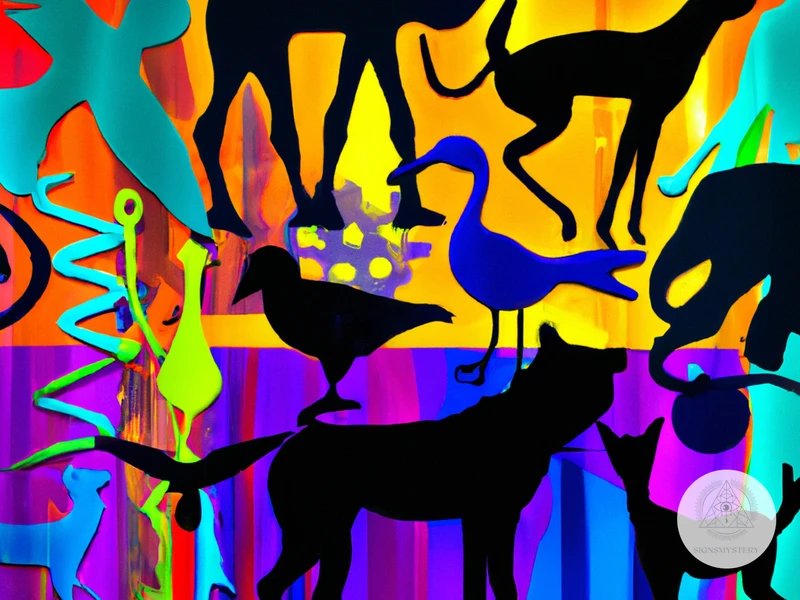
In modern culture, animal symbolism continues to flourish and find its place in various aspects of our lives. From tattoos to fashion and jewelry, animals have become powerful symbols that express individuality, personality, and beliefs.
1. Animal Symbolism in Tattoos: Tattoos featuring animals have gained popularity as a way for individuals to connect with their spiritual side or convey personal meaning. Each animal holds its own symbolism, allowing people to choose symbols that resonate with their personalities or experiences. From the fierce and protective energy of a lion to the wisdom and intuition associated with an owl, these tattoos can serve as reminders of qualities we aspire to embody.
2. Animal Symbolism in Fashion and Jewelry: Animals have long been incorporated into fashion and jewelry pieces, adding symbolism and aesthetic appeal. Whether it’s a necklace with a prominent lion pendant symbolizing strength and courage or a pair of earrings featuring birds symbolizing freedom and grace, these accessories allow individuals to express themselves through wearable art. Animal prints and patterns, such as leopard or zebra, have also become a popular fashion statement, reflecting the characteristics and allure of the animals they represent.
3. Animal Symbolism in Home Decor: Animal symbolism has also found its way into home decor, adding a touch of symbolism and personality to living spaces. From elephant statues representing wisdom and good luck to owl sculptures symbolizing wisdom and intuition, these animal-themed decorations can create a sense of connection with nature and bring positive energy into the home.
4. Animal Symbolism in Advertising and Marketing: Businesses often utilize animal symbolism in advertising and marketing campaigns to convey specific messages and appeal to consumers. For example, the use of a cheetah in an advertisement may evoke a sense of speed, agility, and power, while a dove may symbolize peace and harmony. Animal symbolism not only captures attention but also taps into the cultural associations and meanings associated with different animals.
Animal symbolism in modern culture is a testament to our ongoing fascination with the natural world and our desire to connect with it on a deeper level. Whether it’s through body art, fashion, home decor, or advertising, animals continue to serve as meaningful symbols that allow us to express ourselves, convey messages, and tap into the rich tapestry of cultural associations they hold.
1. Animal Symbolism in Tattoos
Animal symbolism in tattoos has become increasingly popular in modern culture. Inking one’s body with animal designs not only serves as a form of self-expression but also carries deep symbolic meaning. Each animal represents unique qualities and characteristics that individuals may identify with or aspire to embody.
1. Wolf: The wolf is commonly associated with loyalty, teamwork, and fierce protection. It symbolizes the importance of community and unity.
2. Owl: Owls are often seen as symbols of wisdom, intuition, and mystery. They represent a deeper understanding of the world and the ability to see beyond the surface.
3. Butterfly: The butterfly is a symbol of transformation, rebirth, and growth. It represents the journey of life and the beauty that can emerge from change.
4. Elephant: Elephants are known for their strength, wisdom, and longevity. They symbolize power, stability, and a strong family bond.
5. Dragonfly: Dragonflies symbolize change, adaptability, and the power of transformation. They are often seen as spiritual messengers and a reminder to live in the present moment.
6. Lion: Lions are regarded as symbols of courage, leadership, and strength. They represent an individual’s ability to overcome challenges and protect what they hold dear.
7. Snake: Snakes are seen as symbols of transformation, rebirth, and healing. They represent the shedding of old beliefs and the emergence of something new.
8. Horse: Horses symbolize freedom, grace, and power. They signify the ability to overcome obstacles and achieve personal growth.
9. Phoenix: The phoenix is a mythical bird that represents rebirth, resilience, and transformation. It symbolizes rising from the ashes and starting anew.
10. Hummingbird: Hummingbirds symbolize joy, love, and playfulness. They remind individuals to enjoy the sweetness of life and savor each moment.
These are just a few examples of the animal symbolism commonly seen in tattoos. Each animal carries its own unique meanings and can be combined with other symbols to create a personalized tattoo design that reflects an individual’s beliefs, values, and aspirations.
Whether someone chooses to get a tattoo of their spirit animal or simply appreciates and connects with the symbolic meanings, animal symbolism in tattoos provides a visually captivating way to express one’s connection to nature, spirituality, and personal growth.
2. Animal Symbolism in Fashion and Jewelry
Animal symbolism has also found its way into the world of fashion and jewelry, where it continues to hold significant allure and meaning. Throughout history, animals have been admired for their beauty, grace, and unique characteristics, making them a popular choice for adornments. From ancient civilizations to modern times, animal-inspired designs have been incorporated into clothing, accessories, and jewelry, serving as a reflection of personal style and cultural symbolism.
In fashion, animal prints have long been a staple, with patterns inspired by the coats and skins of creatures such as tigers, leopards, and zebras. These bold and eye-catching designs add a sense of wildness, elegance, and power to garments, allowing individuals to display their connection to the animal kingdom. Animal-inspired motifs, such as feathers, scales, or horns, are also commonly seen in clothing and accessories, representing specific animal characteristics or symbolizing spiritual and mythical creatures.
Jewelry is another realm where animal symbolism thrives. Animal-shaped pendants, rings, and earrings have adorned individuals for centuries, serving as personal talismans and symbols of identity. For example, a snake-shaped ring may symbolize transformation and rebirth, while a butterfly pendant may represent beauty and freedom. Animals like elephants, owls, and wolves have also become popular motifs in modern jewelry, each carrying its own symbolic significance.
Certain gemstones and crystals are associated with specific animals and their symbolism. For instance, the mystical and graceful energy of cats is often represented by gemstones such as cat’s eye or moonstone, believed to enhance intuition and psychic abilities. Turtle-inspired jewelry, on the other hand, can be associated with stability, patience, and longevity, resonating with gemstones like jade or pearl.
Animal symbolism in fashion and jewelry not only serves as a mode of self-expression but also connects individuals with the qualities and messages represented by these creatures. Whether it is the mythical power of a dragon, the majesty of a lion, or the wisdom of an owl, incorporating animal symbolism into fashion and jewelry allows individuals to carry the intrinsic qualities of these creatures with them, making a personal and symbolic statement about their beliefs and values.
Animal symbolism in fashion and jewelry adds a touch of intrigue and symbolism to personal style. By incorporating animal-inspired patterns, motifs, and accessories, individuals can celebrate the beauty, strength, and symbolism associated with various creatures. These adornments serve as a reminder of our connection to the natural world, allowing us to express our personal beliefs and values through the language of fashion and jewelry.
Conclusion
In conclusion, animal symbolism has played a significant role in cultures across the globe. Whether in ancient civilizations like Egypt and China or in indigenous traditions such as Native American and Celtic mythology, animals have been used as powerful symbols, conveying deep meanings and carrying rich cultural significance. From the strength and leadership represented by the lion to the freedom and vision associated with the eagle, specific animals have held distinct symbolism in different traditions.
Animal symbolism continues to have a strong presence in modern culture as well. It can be seen in various forms, such as tattoos, where individuals choose to permanently mark their bodies with representations of animals that hold personal meaning and significance. Fashion and jewelry also incorporate animal symbolism, with designers drawing inspiration from animal traits and characteristics to create unique and expressive pieces.
The importance of animal symbolism lies in its ability to connect us to the natural world, to evoke emotions, and to inspire introspection and self-discovery. By understanding the symbolism behind specific animals, we gain insight into the beliefs, values, and perspectives of different cultures throughout history. Moreover, animal symbolism allows us to explore our own personal connections to the animal kingdom and utilize these symbols as tools for personal growth and guidance.
In a world filled with diverse cultures and traditions, animal symbolism stands as a universal language, transcending boundaries and communicating powerful messages. So let us continue to delve into the captivating world of animal symbolism, harness its power, and unravel the deep meanings hidden within the rich tapestry of our shared human experience.
Frequently Asked Questions
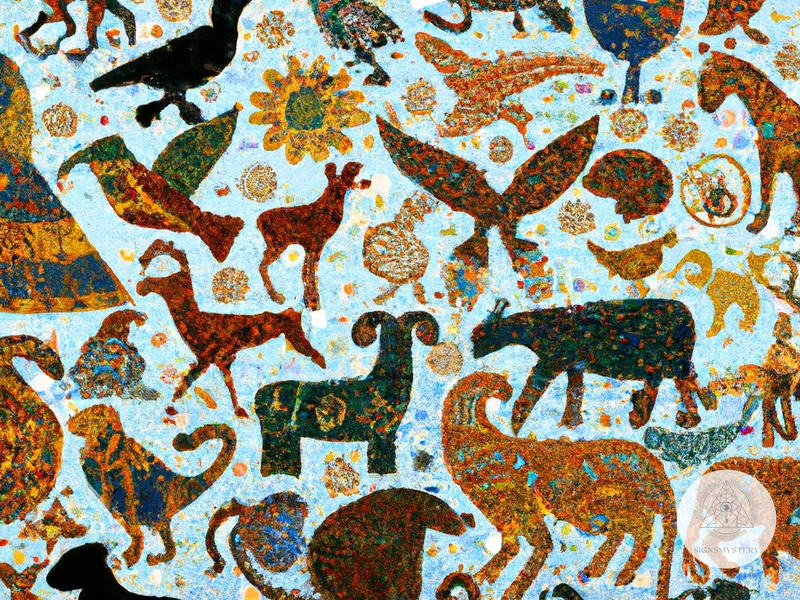
1. Why is animal symbolism important in cultural traditions?
Animal symbolism holds importance in cultural traditions as it serves as a means of communication, representation, and connection with the natural world. It helps convey profound concepts, reflect beliefs, and establish a connection between humans and animals, fostering a sense of identity, spirituality, and harmony with nature.
2. How did ancient civilizations incorporate animal symbolism into their mythology?
Ancient civilizations incorporated animal symbolism into their mythology through artwork, rituals, and storytelling. Specific animals were associated with gods, represented certain qualities or powers, and played significant roles in religious and cultural practices.
3. What is the significance of the lion as a symbol in ancient cultures?
The lion holds immense significance in ancient cultures. It is often associated with strength, courage, leadership, and protection. In Ancient Egypt, the lion symbolized royalty, with pharaohs being likened to lions and seen as protectors and rulers.
4. How do Native American traditions use animal symbolism?
Native American traditions attribute animal spirits to individuals based on their traits and characteristics. These animal spirits act as guides, providing wisdom, protection, and a deeper connection with nature.
5. What does it mean to have a spirit animal?
Having a spirit animal refers to identifying with a specific animal that embodies qualities, characteristics, or energies that resonate with an individual. It serves as a guiding force, providing insights and direction in their lives.
6. How can understanding animal symbolism enhance self-discovery?
Understanding animal symbolism can enhance self-discovery by providing a framework to explore one’s own traits, strengths, and weaknesses through the qualities associated with different animals. It helps individuals gain insight into their identities and personal growth.
7. How does animal symbolism continue to influence modern culture?
Animal symbolism continues to influence modern culture in various ways. It is often found in art, literature, and design, such as tattoos, fashion, and jewelry. Spirit animals are also embraced, with individuals seeking guidance and inspiration from them.
8. Can different animals have different symbolic meanings in different cultures?
Absolutely! Different cultures may assign different symbolic meanings to the same animal. For example, while the lion is associated with courage in some cultures, it may represent kingship or other qualities in others. The interpretation of animal symbolism can vary across different societies.
9. Are animals considered sacred in any cultures?
Yes, animals are considered sacred in many cultures. They are believed to possess unique qualities, powers, or connections to the divine. In these cultures, animals are revered and often play integral roles in religious rituals and beliefs.
10. How can individuals connect with their spirit animals?
Individuals can connect with their spirit animals through introspection, meditation, and paying attention to recurring encounters with certain animals. Exploring the symbolism associated with different animals and their qualities can help individuals understand and connect with their own spirit animal.
References
Frequently Asked Questions

What is the significance of animal symbolism in ancient Egypt?
Animal symbolism played a crucial role in ancient Egyptian culture, where certain animals were believed to embody divine qualities and powers. These animals were often associated with specific deities and were revered for their symbolic meanings, such as the regal lion representing power and protection.
How did Native American traditions incorporate animal symbolism?
In Native American traditions, animal symbolism was deeply connected to the spiritual world and served as a way to understand the balance and interconnectedness of nature. Each animal held a unique symbolic meaning and was often seen as a spiritual guide or messenger, providing lessons and insight.
What role did animals play in Chinese culture?
Animals held significant symbolism in Chinese culture, particularly in relation to the Chinese zodiac. Each year is associated with a specific animal, reflecting its symbolic attributes and characteristics. Animals also played a role in Chinese mythology and folklore, representing virtues and qualities to aspire to.
How are animals portrayed in Hinduism?
Animals play a significant role in Hinduism, where they are considered sacred and often worshipped as manifestations of Hindu deities. Each animal holds symbolic significance, representing different aspects such as power, intelligence, or loyalty. The cow, for example, is highly regarded as a symbol of fertility and prosperity.
What are some common animal symbols in Celtic mythology?
Celtic mythology is rich in animal symbolism, with creatures like the salmon, stag, and boar holding particular significance. These animals were often associated with bravery, transformation, and the cycles of life and death. The Celtic belief in animal spirits also shaped their cultural practices.
How does the lion symbolize power and leadership?
The lion has long been a symbol of power and leadership in various cultures due to its strength, courage, and regal presence. This majestic animal represents qualities such as authority, protection, and dominance. It is often associated with royalty and is a common symbol in heraldry and national emblems.
What does the eagle symbolize in different traditions?
The eagle holds diverse symbolic meanings across different traditions. In many cultures, it is associated with freedom, vision, and transcendence. The eagle’s keen eyesight and ability to soar to great heights make it a symbol of clarity, strength, and spiritual enlightenment.
Why is the dragon a powerful and revered symbol?
The dragon is a powerful and revered symbol in many cultures, representing strength, wisdom, and good fortune. It is often associated with imperial power and embodies the forces of nature. Dragons are prevalent in Chinese culture, where they are considered benevolent beings and symbols of prosperity.
What does the peacock symbolize?
The peacock symbolizes beauty, regeneration, and immortality in various cultures. Its captivating plumage and majestic display have made it a symbol of elegance, pride, and renewal. In some traditions, it is also associated with protection against evil spirits and possessing foresight and vision.
How does animal symbolism influence modern culture?
Animal symbolism continues to influence modern culture in various ways. Many people incorporate animal symbols in tattoos to represent personal traits or aspirations. Animals are also frequently used in fashion and jewelry designs, adding a touch of symbolism and personal connection to one’s style and self-expression.

